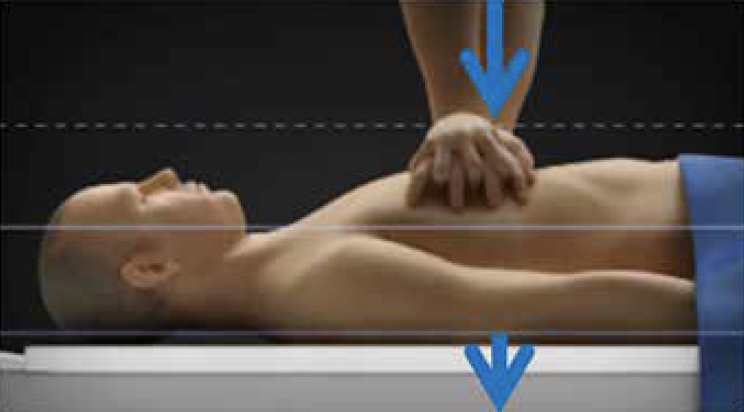Background
Sudden cardiac arrest is one of the leading causes of death in Europe and in the United States. When the heart suddenly stops pumping, effective and continuous chest compressions are needed to sustain blood circulation until the patient’s own heart function is restored.
For high-quality CPR the ERC and AHA 2015 guidelines recommend the following:
• Compression depth of 5-6 cm / 2.0-2.4 inches
• Rate of 100-120 compressions per minute
• Allow for full chest recoil
• Hands-on time >60 %
It has been shown to be difficult to generate guidelines for consistent chest compression depth when the patient is lying in a bed. When you compress the chest, the mattress receives a large share of the compression, not the patient.

Method
A study was set up to test compression depth during two minutes of chest compressions on a feedback manikin lying on a mattress, with and without a CPR board. To secure high quality manual chest compressions, a special frame with a piston set at 5.3 cm / 2.1 inches depth was used.
These high-quality manual compressions were compared with mechanical chest compressions delivered by the LUCAS® 3 Chest Compression System that delivers a compression depth of 5.3 cm / 2.1 inches. The manikin was placed on a full-size foam Stryker mattress with a thickness of 17.8 cm / 7 inches.

Conclusion
The quality of manual CPR is adversely affected when performed on a mattress with or without a CPR board. The only method tested that delivered chest compressions according to the ERC/AHA guidelines was the LUCAS device.
Take-home messages
• Even when delivering perfect manual chest compressions on a manikin in a bed, the mattress effect results in too shallow chest compressions.
• Adding a CPR board did not overcome the mattress effect when delivering manual CPR. It resulted in too shallow chest compressions in the patient.
• The LUCAS device delivered guidelines-consistent chest compressions, independent on what surface the manikin lied upon, eliminating the mattress effect.
References available on request

